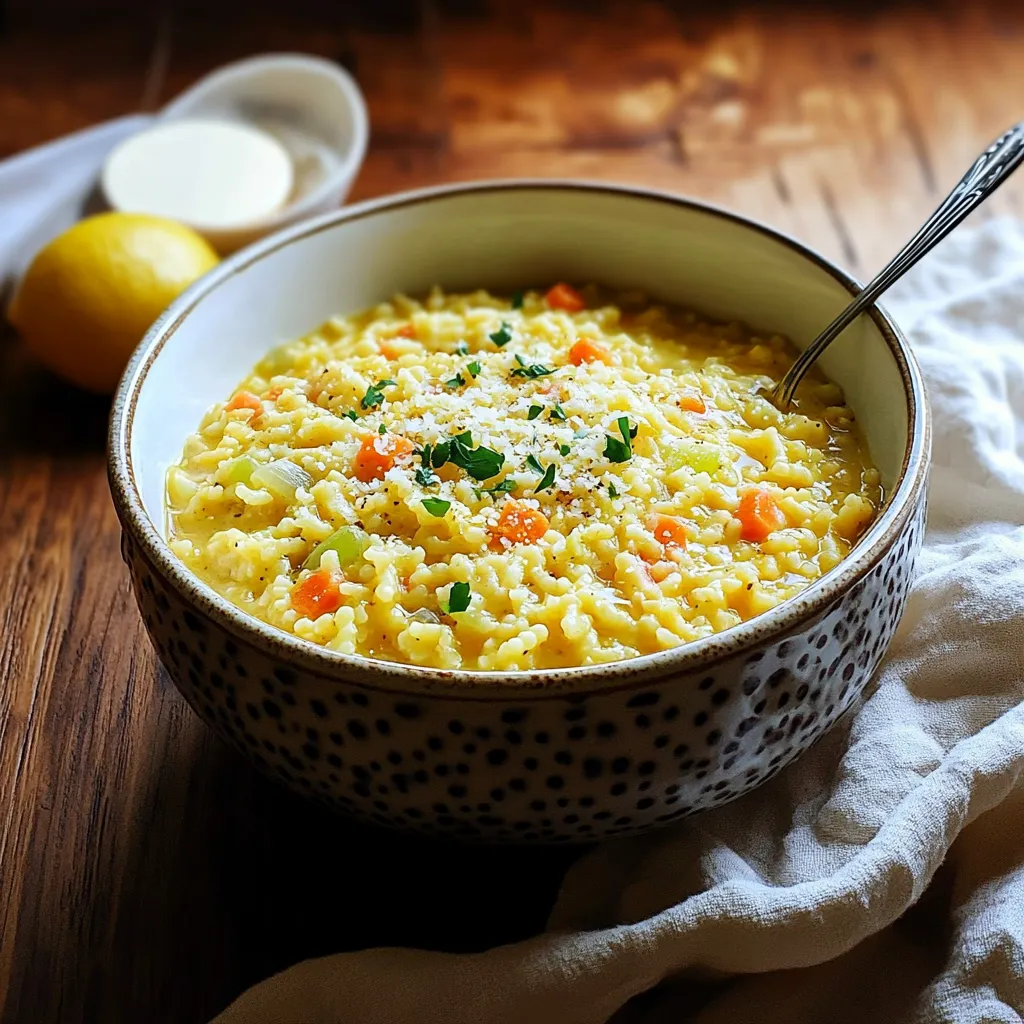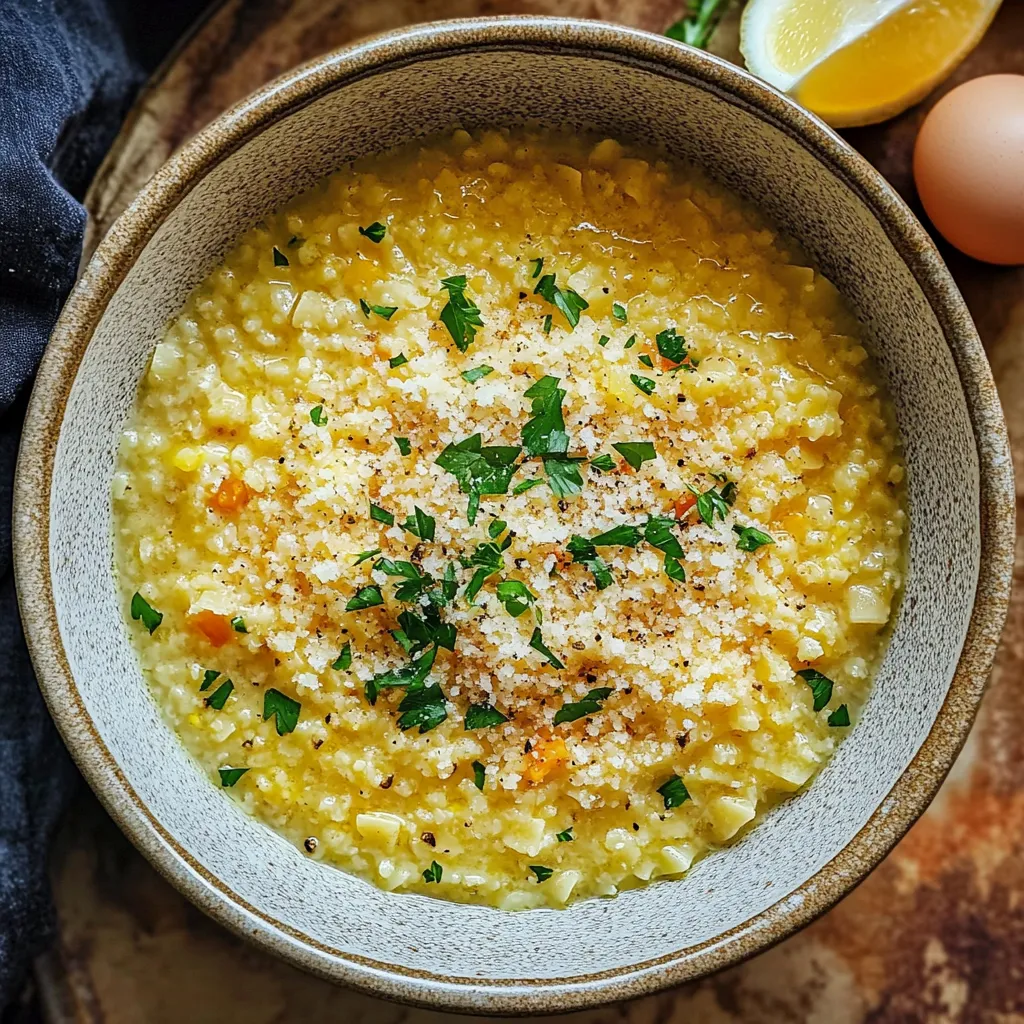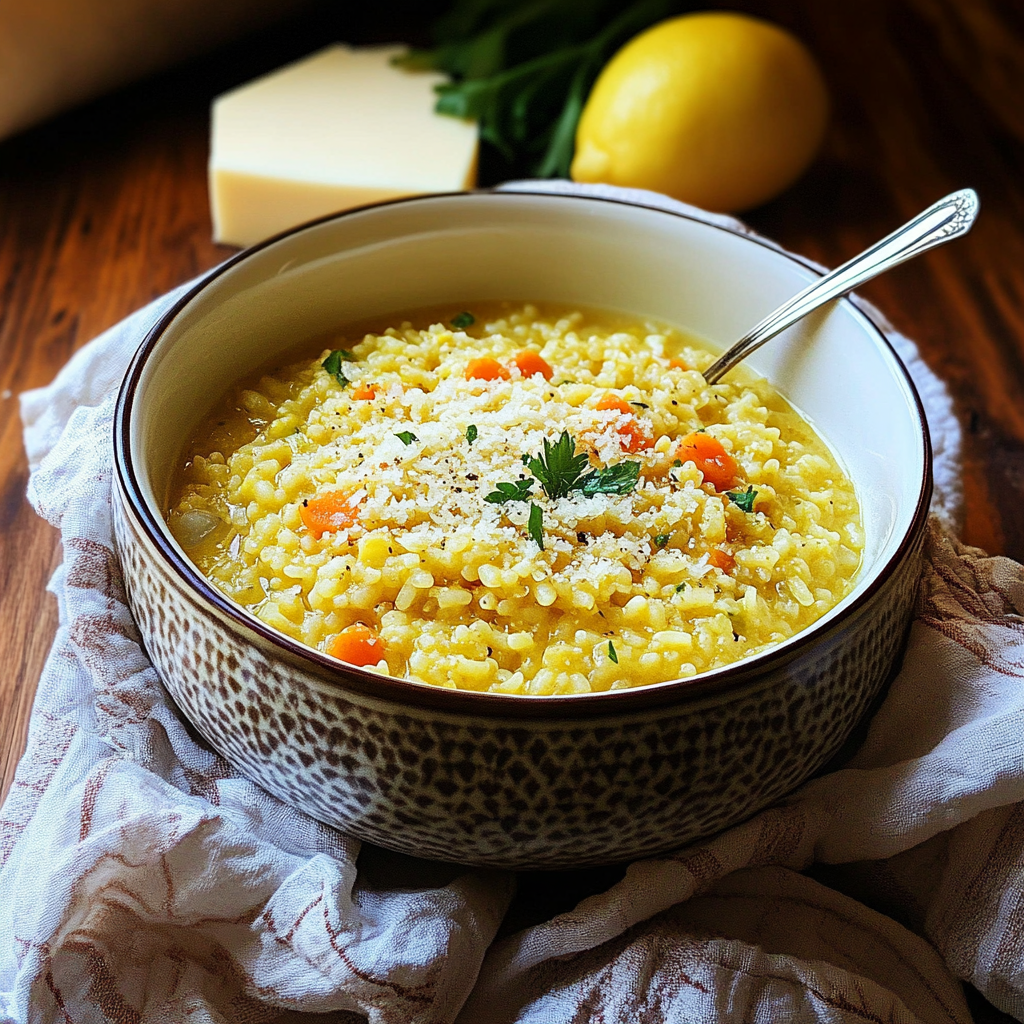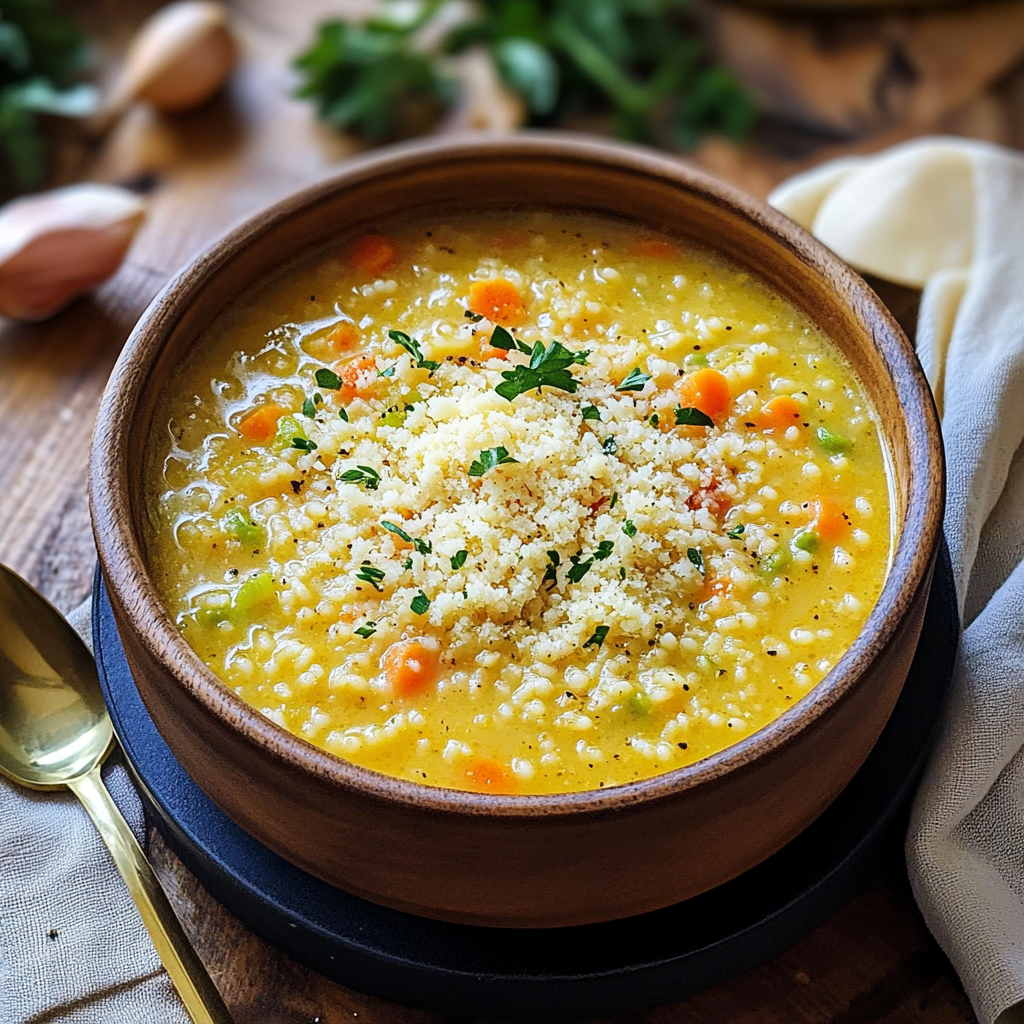 Pin it
Pin it
Tiny star-shaped pasta swimming in rich broth brings comfort in every spoonful. This little gem, fondly called Italian Penicillin, takes basic kitchen ingredients and turns them into a bowl of pure comfort. It's like getting a warm hug from someone's Italian grandma - just what you need when your body and soul crave something soothing.
I've made this countless times for my family, and I've found the real magic of pastina is how simple it is. Whether you're fighting off a cold or just had a rough day, this dish always brings smiles and warms you from the inside out.
Key Ingredients
- Pastina pasta: Tiny star shapes aren't just cute - they're the perfect size to deliver warmth in each bite
- Fresh vegetables: Cut them super small so they cook evenly and match the tiny pasta size
- Chicken bone broth: Makes everything taste amazing - homemade is fantastic, but good store-bought works too
- Real Parmigiano-Reggiano cheese: Worth getting the real stuff - nothing else has that deep, rich flavor
- Fresh garlic: Chop it super tiny so it melts away into the broth
 Pin it
Pin it
Simple Cooking Method
- Step 1:
- Start with your flavor base. Melt 2 tablespoons butter in a good, heavy pot over medium heat. Toss in finely chopped onion, carrot, and celery. Cook them slowly until they're soft and smell amazing, around 5-7 minutes.
- Step 2:
- Throw in your minced garlic and cook for about 30 seconds, just until you can smell it. Don't let it turn brown or it'll taste bitter.
- Step 3:
- Add 6 cups chicken bone broth, 1/4 teaspoon turmeric, and sprinkle in some kosher salt and fresh black pepper. Let it come up to a gentle bubble.
- Step 4:
- Pour in 1 cup of pastina, stirring now and then so it doesn't stick to the bottom. Cook until just tender, about 4-5 minutes. These tiny pasta bits cook really fast.
- Step 5:
- Take the pot off the heat. Drop in 2 tablespoons butter and 1/4 cup freshly grated Parmesan, stirring until they melt and mix in.
- Step 6:
- Grab an egg and beat it in a small bowl. Very slowly pour it into the hot pastina while constantly stirring. The leftover heat will cook the egg and make everything silky smooth.
- Step 7:
- Toss in a handful of chopped fresh parsley and squeeze in some fresh lemon juice. Give it a taste and add more salt or pepper if needed.
 Pin it
Pin it
My grandma always told me that proper pastina should be runny enough to eat with a spoon but thick enough to feel comforting. She'd always say, 'If you don't feel better after eating it, you didn't cook it with enough heart.'
Making Food That Heals
I've noticed that pastina's power to make you feel better isn't just from what's in it, but how you make it. Every part matters - from slowly cooking the veggies to carefully adding the egg. It's food that needs your attention while cooking, and that care becomes part of what makes it so comforting.
Getting The Heat Right
Perfect pastina needs gentle cooking: Keep your broth barely bubbling. Take it off heat before adding egg. Use warm bowls when serving. Mix cheese in bit by bit so it doesn't clump up.
Changing With The Seasons
The base stays the same, but I switch things up throughout the year: Spring brings fresh peas and herbs. Summer calls for chunks of zucchini. Fall works well with tiny butternut squash pieces. Winter means adding finely cut kale.
For Special Food Needs
Easy tweaks make this work for everyone: Can't have gluten? Use tiny gluten-free pasta. Avoiding dairy? Skip the cheese and use olive oil instead. Want more protein? Add some shredded chicken. Watching salt? Go with low-sodium broth.
Why It Makes You Feel Better
Over years of making pastina, I've seen how it can: Make sore throats feel better. Calm upset tummies. Give easy-to-digest nutrients. Make you feel emotionally comforted.
This isn't just another soup - it's care in a bowl, handed down through generations of Italian families. Whether you're making it for yourself or someone you love, pastina has a special way of healing both body and soul.
Building Amazing Broth
Making perfect pastina broth is like writing a soft lullaby - each ingredient needs to hit just right. Good bone broth starts it all, but how you build flavors creates that special comfort: Start with soft, sweet veggies. Add herbs carefully. Use just enough salt. Finish with bright, fresh touches.
Tools You'll Need
After making this tons of times, I've found these tools make all the difference: A heavy pot that heats evenly. A wooden spoon for gentle mixing. A small grater for cheese and garlic. A good ladle for serving.
Quick Fixes
 Pin it
Pin it
When things go wrong: Too thick? Add hot broth a little at a time. Too thin? Let it cook uncovered for a bit. Egg started to curdle? Strain it and try again. Not rich enough? Add a bit more butter.
Serving It Right
Even simple dishes deserve nice presentation: Warm up your bowls first. Bring extra Parmesan to the table. Have fresh pepper ready. Set out some lemon wedges on the side.
Getting Creative
Try these fun changes: Tiny meatballs make it more filling. Fresh spinach adds nutrients. White beans boost protein. Crunchy breadcrumbs on top add texture.
After making pastina for years, I see it's more than just quick comfort food - it shows how healing often comes from simple things. Whether you're cooking for someone with a cold or just needing comfort after a long day, this dish carries generations of wisdom in every spoonful.
My Italian great-aunt always said, 'A bowl of pastina warms you from the inside out.' In our busy world, we all need that kind of comfort sometimes.
Just remember, while technique matters, the most important thing in pastina is the love you put into making it. That's what turns this simple dish from food into something that feeds your soul.
Frequently Asked Questions
- → What exactly is pastina?
- It's a super tiny pasta, usually star-shaped, but you can swap it with orzo or any little pasta.
- → Why do people call it Healing Comfort Food?
- Italians often make this when someone isn't feeling well—it’s warming and soothing.
- → Do I really need to add the egg?
- Not at all. The egg gives it a richer taste and adds protein, but it works great without it too.
- → Can I make a vegetarian version?
- Absolutely! Just use veggie broth instead of chicken bone broth.
- → How do I keep leftovers fresh?
- Store them in a sealed container in the fridge for 3 days. The pasta might soak up the broth, so add a splash when reheating.
